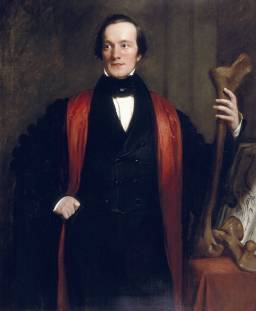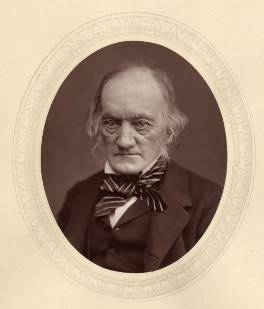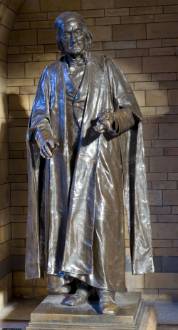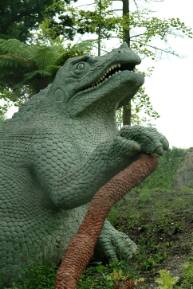On 20 July 2011, we celebrate the 207th birthday of Sir Richard Owen, the driving force behind the creation of the Natural History Museum, which during his time was called the British Museum of Natural History.
It was in 1856 that Owen became the first Superintendent of the British Museum's natural history departments and immediately began to campaign for a new museum dedicated to natural history. The rest is history.. well, natural history to be exact.
Portraits of the Museum's founding father and inventor of 'dinosaurs', Sir Richard Owen (1804-1892) as a young man and later on in life
Sir Richard Owen was one of the most important scientists in history, but many may not know his name. Besides being the founding father of our Museum, he achieved many great things in his long life, from coining the word 'dinosaur' to revolutionising the study of animal anatomy and creating the life-size Crystal Palace dinosaurs that we can still see today (pictured below).
Without him the world of natural history and the Museum would be very different. During the height of his power he was a celebrity of Victorian England and even gave the Queen's children biology lessons.
But Owen was also a controversial figure. His gifts to science and the country brought him incredible fame and power. With these came enemies. His manipulative and hostile personality didn't gain him favours and his rivalry with Darwin and Darwin's supporters was well-known. Later on, his reputation suffered as allegations of taking credit for other scientists’ work abounded.
After his death, his legacy was forgotten and it has only been in the last two decades that his story has been revived.
Join us on Wednesday 20 July at 14.30 in the Attenborough Studio for a special Nature Live talk celebrating Sir Richard Owen's birthday. We'll rediscover exactly what Owen did for us, explore his life and delve into why he is still controversial today.
Left: Admire our statue of Sir Richard Owen in the mezzanine gallery behind the Central Hall when you next visit. (Turn left at the top of the grand Central Hall staircase.)
Right: Dinosaur models sculpted by Benjamin Waterhouse Hawkins working closely with Joseph Paxton and Sir Richard Owen, were installed in the world's first dinosaur park which opened at Crystal Palace Park in 1854.






